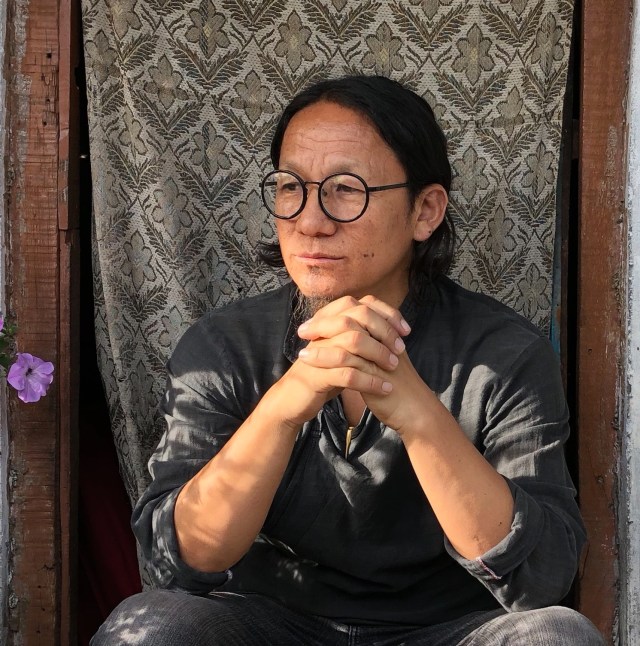Writing Matters: In conversation with Bhuchung D. Sonam
3 min readBy Shelly Bhoil

Photo credit: Tenzin Sangmo – Dharamsala
Poet, translator Bhuchung D. Sonam is the author of four books, including Yak Horns: Notes on Contemporary Tibetan Writing, Music, Film & Politics and Songs of the Arrow. He has edited Muses in Exile: An Anthology of Tibetan Poetry, and compiled and translated Burning the Sun’s Braids: New Poetry from Tibet. His writings are published in the Journal of Indian Literature, HIMAL Southasian, Hindustan Times and Tibetan Review among others.
Burning the Sun’s Braids is Bhuchung Sonam’s most recent work, perhaps the first collection in English of new poetry from Tibet. This book provides an alternative view of Tibet where creative artists play a crucial role to assert their voice as well as to inspire the ordinary people to carry out resistance against an outside force.
Bhuchung Sonam’s permanent address was stolen.
Shelly: What a violent yet necessary, audacious yet logical, and unusual imagery of the burning of the pigtailed-sunrays in the title of your poetry anthology Burning the Sun’s Braids: New Poetry from Tibet! Can you throw some light on the title and also the intriguing cover of the book?
Bhuchung: The title of the book Burning the Sun’s Braids comes from the poem ‘Farewell Prostrations’ by Khawa Nyingchak who died at the age of twenty-six in 2015 while preventing Chinese poachers from killing endangered golden fishes from Kokonor Lake in eastern Tibet. The cover image is a painting titled ‘Two Spirits’ by Tsering Sherpa, a contemporary Tibetan artist based in California. I put them together to indicate the reality in Tibet today. Readers need to make their own interpretations and conclusions.
Shelly: As a bi-lingual book, Burning the Sun’s Braids accomplishes many things; not only does it cater to the Tibetan and English speaking readers but also reinforces the idea of rooting one’s identity in one’s home language, especially for the exile-born generation of Tibetans who have circumstantially drifted away from the Tibetan language. What was your idea behind translating poems into English from Tibetan?
Bhuchung: In an ideal world, I think, a work of art should not have any agenda or aim. But the world, as it is, is far from our dreams. This is even more so for people such as Tibetans living under occupation and as refugees away from their homes. For the third and fourth generation of Tibetans in exile who are growing far from their culture and language, I hope this bi-lingual book introduces what writers in Tibet are writing about and also inspires them to learn their language and strengthen their sense of identity.
The other goal is to get a wider audience for the poets from Tibet who have been suffering harassment, arrests and jail terms under China. I have immense respect for their courage and the least that I can do is to translate their work into a language that has, by and large, a global audience.
Shelly: The Tibetan language has undergone massive changes in the last few decades inside Tibet where a socialist ideology was introduced into it. In exile too, the Tibetan language had to be standardized in the schools for refugees who spoke different regional dialects. As I am told, the newcomer refugees (those who have come from Tibet in the last decade or so) and the born-refugees (those who were born in India to exiled parents) speak in a language which is mutually intelligible but not necessarily the same. Did you confront any issues of variations in the Tibetan language of the poems from what is standardized in the exile community, and the problem of the un-translatability of certain Tibetan nuances into English? If yes, how did you deal with these? Could you illustrate with an example or two?








1 thought on “Writing Matters: In conversation with Bhuchung D. Sonam”